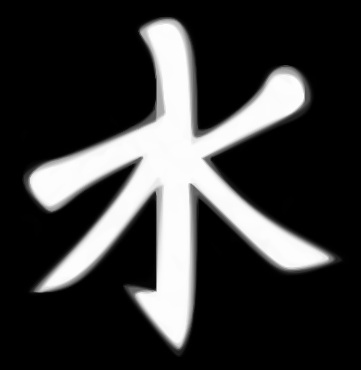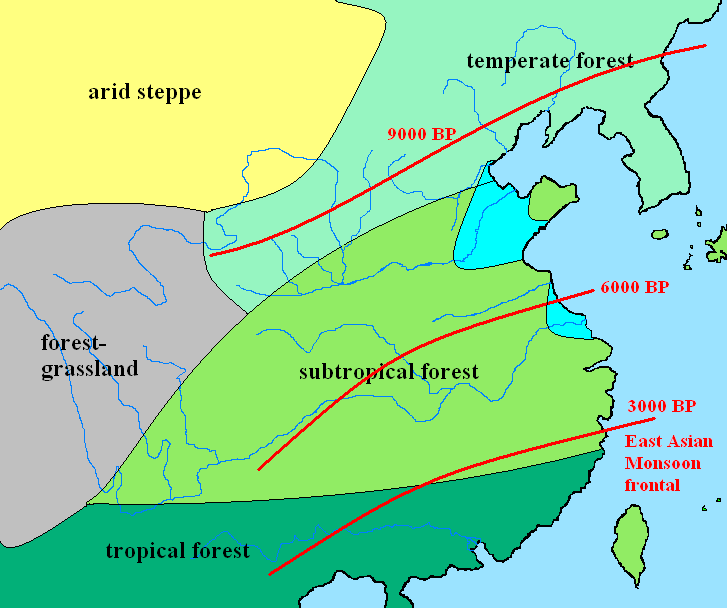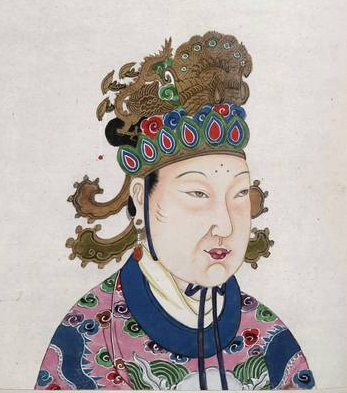Horse Sculpture from Han Dynasty
Topics on the Page
A. The role of Kinship and Confucianism in maintaining order and hierarchy
B. The political order established by the various dynasties that ruled China
- Dynasties
- Scientific Inventions of the Song Dynasty
- Song Dynasty Rocketry
CROSS-LINK: Imperialism in China in the 19th and early 20th Centuries
C. The role of civil servants/scholars in maintaining a stable political and economic order
- Empress Dowager Cixi
- Li Shizhen
- Women in Chinese history

Gif of the development of China
Background
Asia for Educators from Columbia University has resources for China, Japan, Korea, Vietnam and South Asia by historical time period
Ancient China from the British Museum with sections on geography, arts and crafts, time and writing.
A Visual Sourcebook of Chinese Civilization from the University of Washington. Includes a visual timeline as well as information on geography, religion, technology, paintings, homes, and other aspects of material culture and family life in China.
A website with access to primary documents about Ancient China from Fordham University.
 Inventions and Technology of the Ancient Chinese
Inventions and Technology of the Ancient Chinese
See also Best of History Websites: China
Focus Question 1: How did Confucianism play a role in maintaining order in the Chinese civilization?

 For Teachers: This website provides primary source readings on Confucian thought each with discussion questions. Read about Confucius as a teacher, on filial piety, humanness, government, and religious life.
For Teachers: This website provides primary source readings on Confucian thought each with discussion questions. Read about Confucius as a teacher, on filial piety, humanness, government, and religious life.
While Confucius never wrote down his philosophy, his disciples compiled his teachings after his death and preserved them in the Analects. Click here for the complete Analects of Confucius divided into four parts.
While the Old Texts of Confucianism was understood as the correct texts, which were the basis for all of the civil service exams, Kang Youwei, a brilliant scholar taught that the New Texts were actually the true meaning of Confucianism, and in order to understand what was truly meant, one must read the New Texts.
Focus Question 2: What was the political order established by the various dynasties that ruled China?
Tang Dynasty

A. Dynasties
- Xia 2100-1800 BCE- Yu was successful in stopping the flooding and increased the produce from farming (since the floods usually destroy the crops).
- Because of this the Xia tribe’s influence strengthened, and Yu became the leader of the surrounding tribes.
- Shang 1700-1027 BCE
- Western Zhou 1027-771 BCE
- Eastern Zhou 770-221 BCE
- Qin Dynasty:221-207 BCE
- United country under centralized legal government; silenced political opposition; unified legal code.
- Western Han 206 BC-9 CE
- Eastern Han 25-220 CE
- Three Kingdoms 220-265 CE
- Western Chin 265-316 CE
- Eastern Chin 317-420 CE
- Southern and Northern Dynasties 420-588 CE
- Sui Dynasty (589)
- Unified country after years of political division.
- Tang 618-907 CE
- Five Dynasties and Ten Kingdoms Period (907-960)
- Tang & Song Dynasties battled for political control.
- Qing Dynasty (1644-1911) Continued Confucian way of government.
- Developed “Eight Banners”—groups of men to maintain their own language and style of dress; opposed Chinese life. Lost power in 19th century; starting with First Opium War with Britain.

View this timeline of Chinese Dynasties and learn about their accomplishments
- Link here for excellent material on the history of the Mongols from the website Mongols in World History provided by Columbia University
- Click here for "2000 Years of Chinese History! The Mandate of Heaven and Confucius" by Crash Courses.
- This Link explains how the Qing Dynasty is not from China, and actually conquered the region in 1644.
- The Empress Dowager, or the last ruler of China
 Click here for a fun Sporcle Quiz on the Chinese Dynasties
Click here for a fun Sporcle Quiz on the Chinese Dynasties
Link here for a short biography of Qin Shui Huang (259-210 BCE), the first emperor of China.
Beijing and the Earliest Planning Document in History. The Guardian
Scientific Inventions of the Song Dynasty
- Mechanical Clock
- Block Printing
- Porcelain
- Drought-resistant type of rice
- movable typing
Song Dynasty Rocketry: The Untold Story
B. China and World Affairs
Beginning the 8th century, China carried on a global sea trade throughout Southeast Asia, the Middle East, and Africa. Here is a quote about the trade from "Bringing Up the Past" by David DeVoss from Smithsonian, July 2007 (p 84):
- "Boats laden with ivory, myrrh and metal from the Abbassid caliphate in Baghdad took on Persian pearls, alum, and cumin along the Strait of Hormuz before sailing out of the Persian Gulf, down India's Malabar Coast and across the Indian Ocean to the Buddhist kingdom of Srivijava, on Sumatra's eastern shore. Srivijava's port of Palembang was the most bustling of its day, a center for merchants dealing pepper from Borneo, cloves, nutmeg and mace from the Molucca Islands, and eventually sandalwood from Timor. Many of these goods were bound for China."
China sent iron, silk and manufactured goods in return. By the Song Dynasty (960), China began exporting huge amounts of ceramics (including the plates, cups and bowls made of glazed clay we now call "china").
In terms of military expansion
Before the establishment of the Yuan Dynasty, the three sons of Mongolia went on expeditions as far as Europe and Egypt in Africa.
https://en.wikipedia.org/wiki/Mongol_invasion_of_Europe

The Opium Wars
The Opium Wars were the beginning of foreign powers gaining power in China.
- Also, click here for a breakdown of the events and dates.
- This provides more in depth breakdown of both wars and the political situation in China and Britain.
Crash Course! breaking down the Silk Road
Focus Question 3: What was the role of civil servants/scholars in maintaining a stable political and economic order?
-
Civil Servants were literate, educated individuals who made up the bulk of China's Bureaucracy. This Bureaucracy was run by people who did not necessarily have military or financial power. Thus, the institutions of government throughout China's history were maintained by people who did not have the financial or militaristic means of obtaining power. In other words, civilians ran the government's functions.
- While family history, peerage, and money determined many of China's civil servants, starting in 605 AD the Imperial Examination system was established. This exam tested an individual's literacy, knowledge on the Analects of Confucius, mathematics, and other scholarly pursuits. Passing the examination would allow an individual, regardless of social status, to become a civil servant.
- Civil servants were assigned to locations outside of their home district, in an effort to prevent corruption.
- The purpose of this examination system, inspired by Confucian ideals, was to break up the monopoly of power held by feudal lords and already entrenched power. Unfortunately, as time passed the size and difficulty of the Imperial Examination grew. It became almost impossible for lower-class men to pass the examination, who could not afford the educational materials necessary to succeed.
- Thus, the Imperial Examination allowed some mobility in society, while simultaneously producing a government run by educated, talented individuals.
- Evidence of this can be seen throughout the Dynastic cycle. When invaders, typically from the North, captured China, they often adopted and re-enforced the bureaucracy.
- Thus, the actual structure of the Chinese government remained unchanged throughout most of its recorded history. Dynasties did not make new nations, they acted within the bureaucracy already running the country.
Levels of Examination
- County
- District
- Provincial
- Imperial
Learn more about the examinations here.
Click Here to see some questions that could have been on the exams.
Click Here to see what the actual process of the examinations was.
Civil Service in Ancient China
Li Shizhen (1518 -1593)
Li Shizhen, Brief Life of a Pioneering Naturalist, Harvard Magazine
Go here for Li Shizhen 495th Birthday Google Doodle, YouTube
Ben Cao Gang Mu: Compendium of Materia Medica
- Most comprehensive book ever written of traditional Chinese medicine
- 52 volumes took 27 years to complete
 Women in Chinese History
Women in Chinese History
From 1861- 1908 Empress Dowager Cixi ruled China and the Qing Empire behind the scenes of her son Tongzhi, and then her nephew Guangxu. During this rule she was the most powerful person in China.
- For more information on the Empress Dowager, click Here
Wu Zeitan is the only woman to rule China as emperor during the Tang Dynasty.
Empress Wu Zetian

Empress Wu Zetian and the Spread of Buddhism from Influential Women of the Silk Road from the Women in World History Curriculum project.
Wu Zetian's Contribution to the Spread of Buddhism
In the foreign spread of Buddhism, Wu Zetian, as a woman among emperors, is associated with the Buddhist image of the female Goddess of Mercy.
Wu ZeTian propagated Buddhadharma for more than 50 years, setting the cornerstone for all eight schools of Mahayana Buddhism. She also showed how Avalokiteshvara, a male bodhisattva, was transformed into the female Guan Yin. It is difficult to judge Wu’s accomplishments and faults in Chinese history, which emphasized male supremacy. Nevertheless, her contribution to Buddhadharma is unquestionable – not only was Buddhism in full bloom in the Tang Dynasty, the words she left behind are heard to this very day.
https://khyentsefoundation.org/focus/focus_June2016.htm
 guanyin in Japen
guanyin in Japen
 Learning Plans
Learning Plans
Western Views of Women in China from George Mason University uses primary source material in an inquiry-based lesson plan.
Lesson plan for Women and Confucianism
(Icon) Click here for an article from the University of Tennessee-Knoxville explaining the purpose of foot binding in Imperial China.
Du Fu/Tu Fu

- A Confucian poet during the 8th century in China during the Tang Dynasty.
- Took the civil service exam twice and failed both times. He approached the Emperor directly and presented some of his literary accomplishments. He received a special test, and passed and was appointed a job. However, Du Fu continued to experience catastrophe in life - he was forced to move his family because of a famine brought on by flood in the region, and again due to chaos from the An Lushan rebellion.
- His poems are historical and reflect his experiences. They reflect the virtues taught by Confucius.
For more information on Du Fu and his poetry, see the Poetry Foundation.
Here is a link to a lesson plan that has to do with the social status of women in the context of Confucianism.
 TEST Question: Which aspect of Chinese society was most influenced by Confucianism?
TEST Question: Which aspect of Chinese society was most influenced by Confucianism?
a) patterns of land use and development
b) social hierarchies and familial relationships
c) patterns of urban and rural settlement
d) religious beliefs and practices
ANSWER IS B
Works Cited:
- The History of China, http://www.travelchinaguide.com/intro/history/
- Chinese Dynasties, http://library.thinkquest.org/12255/library/dynasty/dynasty.htm
- Confucianism, http://www.religioustolerance.org/confuciu.htm
- Timeline of Chinese Dynasties, http://www.mnsu.edu/emuseum/prehistory/china/timeline.html
- Asia for Educators
- http://plato.stanford.edu/ entries/confucius
Comments (0)
You don't have permission to comment on this page.